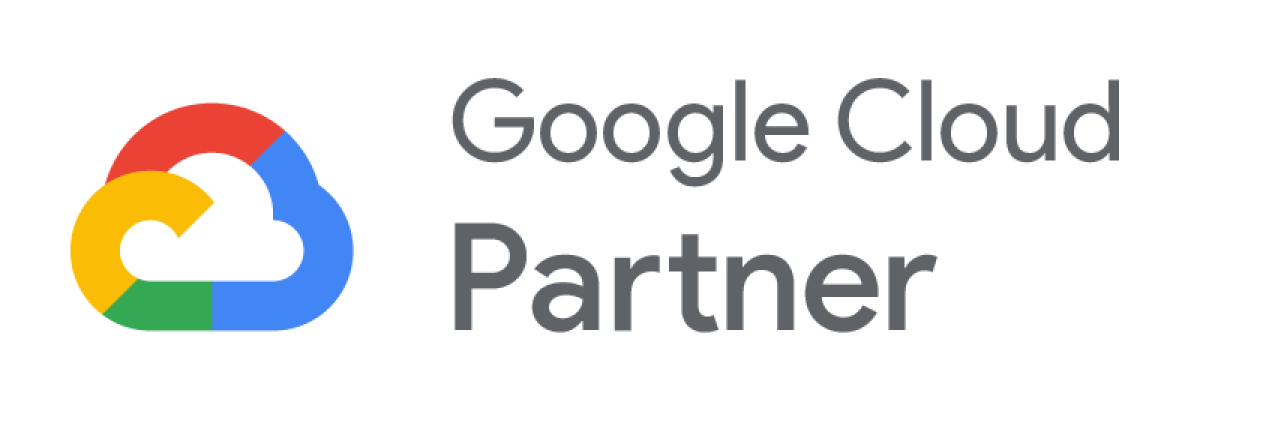 3 day course
3 day course
 Partner of the Year
Partner of the Year
 Virtual, Private
Virtual, Private
As a trusted Google Cloud Partner, Jellyfish has been selected by Google to facilitate the delivery of this three-day course.
During the session, you’ll learn about authentication and authorisation, generative AI for developers, and continuous integration and delivery for your apps running in Google Cloud.
We’ll teach you about event-based applications and the use of service orchestration and choreography to coordinate microservices. We’ll also cover Cloud Functions, which means you’ll be able to go on and implement single-purpose functions that respond to HTTP requests and process events within your cloud infrastructure.
Our Developing Applications with Google Cloud course is available as a private training session that can be delivered virtually or at a location of your choice in the UK.
Course overview
Who should attend:
This course is for application developers who want to build cloud-native applications or redesign existing applications that will run on Google Cloud, as well as cloud architects and engineers.
What you'll learn:
By the end of this course, you will be able to:
- Understand best practices for application development in the cloud
- Understand how to choose the appropriate data storage option for application use cases
- Use authentication and authorisation to secure an application
- Describe use cases for the different Google Cloud compute options used for running applications
- Describe the benefits and challenges of microservice-based architectures
- Describe the advantages of event-driven applications
- Identify the strengths of orchestration and choreography
- Use Workflows, Eventarc, Cloud Tasks, and Cloud Scheduler to coordinate a microservices application on Google Cloud
- Recognise the benefits of and use cases for Cloud Functions in modern application development
- Build, test, and deploy Cloud Functions
- Secure and connect Cloud Functions to resources and cloud databases
- Use best practices with Cloud Functions
Prerequisites
To get the most out of this course, you'll need some programming experience. Basic proficiency with command-line tops and Linux operating system environments will also be helpful.
Course agenda
- Discuss best practices for application development in the cloud
- Describe patterns for improving stability and reliability of cloud applications
- Discuss how the Google Cloud SDK lets you interact with Google Cloud services
- Describe how Cloud Client Libraries can be used in your applications
- Discuss how Cloud Code helps developers create cloud applications on Google Cloud
- Understand how to choose the appropriate data storage option for application use cases
- Use Firestore to store document-based application data
- Use Cloud Storage to store unstructured data
- Discuss how Identity-Aware Proxy authenticates application users
- Describe the use of federated identity for applications in Google Cloud
- Describe how to authenticate your application to Google Cloud APIs based on how your application is deployed
- Use authentication and authorisation to secure an application
- Describe how pre-trained machine learning APIs can be called from applications
- Differentiate the use cases for Google Cloud’s pre-trained machine learning APIs
- Use a Google Cloud pre-trained machine-learning API in an application
- Discuss the features of a continuous integration and delivery pipeline
- Describe how to build and store application container images
- Create a container image by using Cloud Build
- Describe use cases for the different compute options used for running applications on Google Cloud
- Differentiate the benefits of different compute options on Google Cloud
- Recognise the four golden signals
- Describe benefits of the services in Google Cloud’s operations suite
- Describe the differences between monolithic applications, service-oriented architecture (SOA), and microservices
- Describe the benefits and challenges of microservice-based architectures
- List the characteristics of an event
- Describe the advantages of event-driven applications
- Understand how Pub/Sub and Eventarc can be used to connect services by using the choreography pattern
- Explain the benefits of using CloudEvents for event metadata
- Understand how Workflows can be used to orchestrate services
- Differentiate the use cases for choreography and orchestration
- Use Workflows, Eventarc, Cloud Tasks, and Cloud Scheduler to coordinate a microservices application on Google Cloud
- Define Cloud Functions
- Identify the use cases, features, and benefits of Cloud Functions
- Distinguish the types of Cloud Functions, and identify the supported languages for developing functions
- Develop and deploy a Cloud Function using the Google Cloud console and gcloud CLI
- Understand the different kinds of triggers available, and learn how to specify triggers for functions
- Connect services and functions with workflows
- Connect functions to resources in a VPC network
- Secure Cloud Functions with identity and network-based access controls
- Understand function identity
- Understand how to authenticate and authorise access to functions for invocation and administration
- Protect functions and related data with encryption keys
- Integrate Cloud Functions with cloud databases such as Firestore and Memorystore
- Use secrets with Cloud Functions
- Use environment variables with Cloud Functions
- Use best practices when developing and implementing Cloud Functions
- Understand how to retry event-driven Cloud Functions on failure


